The technical progress facilitated to a maximum of the life of modern people. Where once factories stood, now, for the most part, collect the shopping and entertainment centers, cinemas, and beauty salons. The process of the production of goods is almost is completely mechanized and computerized. And even the production sphere gradually to the service sector differs. The man sits now for hours in the office, tried to get with another way to effective sales, Marketing move, or a different variant of the extraction of money from foreign money exchanges. And then he sits in his vehicle and with comforts, in the comfortable chair, going home. Of course, we have the perfect image, not to mention about the traffic situation on the road, stuffy offices, public transport, of which a large part of the population, etc. But the people who don't want to live comfortably?
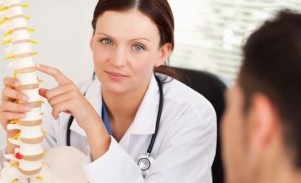
However, there are many advantages of the use of such comfort? Our century is already the age of a lack of exercise was announced, which brings a lot of unpleasant consequences. Cardiovascular disease, massive obesity, high blood pressure, sciatica, and other complaints included complete with your own car, a soft chair and a private massage room. But the most common disease that we have to pay the price for a sedentary way of life, is the osteochondrosis. It is dedicated to him in this article.
Osteochondrosis
What osteochondrosis is? We will consider the Mechanisms of development and the types of the disease, When we hear of osteochondrosis, first and foremost, think about pain in the back and in the muscles. However, even the disease directly, the device is not muscular touches. Pathological changes occur in the cartilage, in all joints of our body.
Cartilage leads and protective functions vapors. In addition, he secretes a special secret, which lubricates the joint, reducing the friction in the movements of the bone. But in some cases, the cartilage wears out of the field (Allianz). In addition, in the case of metabolic disorders, noticeable lack of certain vitamins and trace elements, as well as in the hereditary metabolic disorders food, the tissue of the cartilage is disturbed, and it loses its strength and elasticity. This state carries the title of dystrophy.
So, osteochondrosis is a degenerative-degenerative changes of the cartilage. Theoretically, pathological changes may affect any joint. But in practice, osteochondrosis mostly in our spine. And depending on which part of the spine process, localized in the lumbar, thoracic and cervical osteochondrosis are different.
Imagine our spine. He vertebrae consists of a from each of the bony formations. Each vertebra has a body and a pair of transverse projections. Between the body and the spines, a hole through which the radial load of the spinal cord has. The vertebrae are arranged so that the holes in a hollow tube – the spinal canal to form. The vertebral bodies are on top of each other, and between them a layer of cartilage bulbosus cartilaginous discs are located. These serve as shock absorbers, cushioning the blows and reduce the load on the spine when walking or other movements of people. The vertebrae have a similar structure, and vary in size. The with the exception of a few fused vertebrae Sacro-coccygeal Department, and the seven elements of the cervical spine,differing from each other in the structure.
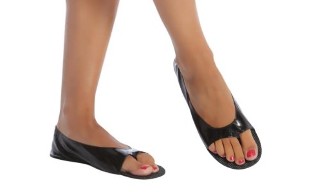
The spine is in four sections:
- Cervical (from the 1. to 7. Cervical vertebrae);
- Chest of drawers (8. to 12.);
- Lumbar (13. to 18.);
- The sacrum and coccyx (this Department consists of a motionless United bone, and, therefore, not in the pathological process involved).
Accordingly, osteochondrosis of the spine is divided into three main types, which we have referred to above.
Types of osteochondrosis
Most often, osteochondrosis of the cervical spine because the cervical vertebrae have a different structure and the muscular apparatus that supports the spine in this part rather weak. In the course of the time in the cervical spine or to harden in any other Department of the spine, disk damage to the cartilage begins to lose its elasticity, and the vortices come closer to each other. The result can vessels a pinched nerve fibre or blood. As a result of the disturbed Innervation and blood supply of the affected organs, that leads to a deterioration in their work, the reduction of motor activity, the formation of a painful syndrome. In addition, in the case of a displacement of the vertebrae, its shoots can irritate. the muscles in this area, which leads to a spasm of the muscles But against the background of the disease, muscle tension, the device and so the work twice, it must run, to compensate for reduced damping function, changing the Position of the spine and of the vertebral bodies.
Along with the neck strap, quite often sciatica pain in the lower back, developed against the background of the regular high loads on the spine, weight lifting, and so on.
Thoracic osteochondrosis develops a bit more rare than the first two varieties of the disease. In addition, diagnosis by the fact that the disease has a number of non-specific symptoms similar to the symptoms of Angina pectoris. Especially the fact that the vertebral bodies, cartilage, nerve fibers, the brain and the spinal cord is not strewn with pain receptors, which means that the pain in the event of osteochondrosis-mediated character is the highlight. Osteochondrosis as well as some varieties Osteochondropathy, the plurality of other etiology. About them we will mention in our article.
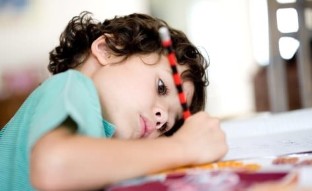
Causes of the disease
With the reasons for the development of degenerative disc movement disorders – lack of – we have your story. How, for example, the movement – life! As no adequate motor activity influence on the state of our joints and spine can? The thing is that our back has a natural musculature that supports the spine and helps him to properly fulfill their role. However, in the absence of physical exertion, muscle-apparatus of the unbroken, the spine loses its support, resting the load on bulbosus cartilage Discs, and they are exposed to, with time, degenerative changes.
However, excessive physical stress, for example, in the case of professional athletes, it can also lead to Degeneration and dystrophy of the cartilage, and thus provoke the development of degenerative disc disease and other Osteochondropathy. Accordingly, in this respect, the Golden mean needs to hold in order to avoid health problems.
An important role in the development of osteochondrosis of the life-style of modern people plays. In addition to the chard to a sufficient motor activity, an unbalanced diet, noticeable lack of vital vitamins and mineral substances in the diet, Smoking, alcohol consumption, use in daily life and in the workplace, the wrong furniture, sleeping on a soft mattress, habitual bad posture, driving, working conditions, etc. d.
In the complex, all of this inevitably leads to disorders of cartilage, loss of qualitative properties (strength, elasticity, elasticity) and the development of degenerative disc disease. Flat feet – is another fairly common cause of degenerative disc disease. It seems, that the deformation of the arch of the foot mean can lower back pain, and even more so in the neck? It turns out, very directly. Follows the human foot is structured in a way that you are going to be able to properly, the weight of the whole body to distribute the. In the course of Evolution, bones of the feet two bow formed – in longitudinal and transverse direction. Due to this structure, together with the advent of the physiological curvatures of the spine, it was possible for an upright gait of humans. If the arch of the foot is flattened from these or those reasons, is the one that killed the entire load on the spine. And this pain in the back, and a restriction of mobility, and even migraine.
In recent years, many scientists tend, in many ways, to the development of degenerative disc disease inheritance affected.
Symptoms of osteochondrosis
How to recognize back pain? Symptoms of osteoarthritis are very diverse. Although most of us only know about the main signs of this disease: muscle pain and difficulties in movement. But we are not in vain, quite in detail about the Mechanisms of the development of osteochondrosis. Because the symptoms for this disease are directly associated with those processes that occur during the development of the pathology.
So, as we already know, all of the symptoms of degenerative disc disease associated with the compressed vessels and nerve fibers, with subsequent impaired Innervation and supply of the respective muscles, organs and tissues. What does not mean that the pathological changes affect only the muscle apparatus. So, the symptoms of cervical degenerative disc, headaches, and even dizziness disorders, and frequent, along with pain in the muscles of the neck and the shoulder girdle.
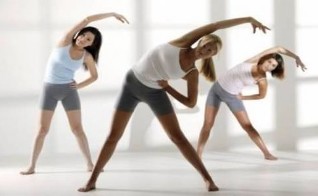
Headaches with cervical osteochondrosis disturbed vascular origin is that the blood flow in the tissues of the brain, and the nerve cells to experience hypoxia. With this connected and dizziness, which can sometimes syncope up to. Circulation problems, associated with the osteochondrosis, which in rare cases can also lead to loss of hearing in patients, the impairment of the coordination of movement (unsteadiness of gait), hoarseness. Snoring can also diseases, statements about the development of degenerative disc.
If degenerative changes affect the intervertebral discs of the thoracic spine of the mandrels , then osteochondrosis pain manifested in the back of the appropriate localization, the accession of the asthmatic component of cardiac pain. Sometimes the Patient can premature beats shortness of breath and extra. Often, patients confuse the origin of cardiac pain with coronary heart disease (Angina pectoris). But in this type of heart pain however, there are a number of special features. Subjectively, they can be perceived as a "stake" in the chest of drawers. Intake of nitrates and other antianginal agents, not relieves pain. Angina pectoris in humans grows, the fear and even the fear of death. Thoracic osteochondrosis has no such symptoms. Sometimes cardialgia, the osteochondrosis of the spine can take a few days, but it's not life threatening people. Ischemic heart pain is short-lived, but to ignore them can lead to the development of myocardial infarction and timely medical aid at an attack of Angina pectoris, the cause of the mortality can.
Osteochondrosis of the lumbar-sacral spine characterized by pain in the lower back. The pain radiation into the lower extremities. The Patient can also occur, difficulty in walking, which is associated with the lowering of the tone in this Segment, animated by the spinal muscles. Pain shooting in nature. Sometimes patients it is difficult, the back stretch, stand up, or change the Position of the body. Reflexes of the lower extremities osteochondrosis of the lumbar-sacral spine is reduced.
Osteochondropathy
We have already touched on in this article, the Problem of how the children of osteochondrosis. Symptoms and treatment of this disease differ somewhat from those in adults. This is mainly with the fact that the concept of children osteochondrosis means several different Osteochondropathy. The most common are:
- Disease Basement,
- Osgood–Schlatter Disease,
- Scheuermann's Disease-May,
- Morbus Legg-Calve-Peters.
The cellar disease occurs in children aged 8 to 12 years of age, but can develop in adulthood, which happens much less frequently. In this pathology spongy substance of the bone, use of the foot affected. Where there are two main types of this disease. In the case of the disease in the basement of the first type, the navicular bone is affected. If the disease is of the second kind, relating to the pathological changes in the metatarsal bone.
Morbus Schlatter proposes to tibial bone to use in the area below the kneecap and developed in the age group of 11 to 14 years. Predisposing factors are sports (football, Basketball, running, jumping, etc.). Also, the occurrence of the disease may benefit due to the mismatch of the speed of growth of the bone in adolescents, and the development of cartilage tissue.
Scheuermann's disease-May or curvature of the spine, is one of the versions of the chest of drawers osteochondrosis. This pathology usually develops in children and young people aged 8 to 14 years, but a long time neither the child nor the parents may not notice any major deviations. Visible Symptom is a violation of the posture of the child.
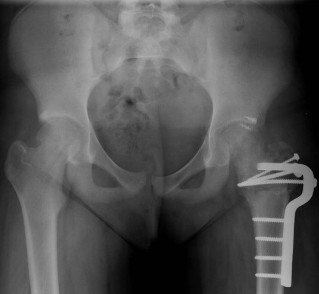
Morbus Legg-Calv-Perthes is a disease of the legs fails, to be more precise, for example, your head, in the area of the cartilage. The disease most commonly affects children under the age of 4 years, with 14 years of claudication have manifested. In this disease, the necrotic changes in the tissue of the femoral head, and an infectious (aseptic) character. Most of the time the cause of the disease is a hereditary predisposition. On the first stages the child begins to limp. Later, the child pain in the area of hip and the king's meadow, especially in the movement.
The prophylaxis of osteochondrosis in the age of the child is of moderate physical activity, wear comfortable shoes, correcting and maintaining proper body posture, for what there is a special set of exercises. Back pain and pregnancy is no doubt, if the woman suffers from osteochondrosis, is when planning a pregnancy, it should be in advance to the treatment of this disease. Even though you finally to heal such a disease is not possible, because the cartilage is completely restore is impossible.
In addition to sufficient physical activity, moderation, and balance in the diet will help you normalize your weight, and to keep then under control. Normal weight – your well-being and the health of your back. And healthy back is sturdy and a good night's sleep and no headache, prevention and other diseases of the musculoskeletal system. Love yourself, give yourself more attention and pay attention to your health!

































